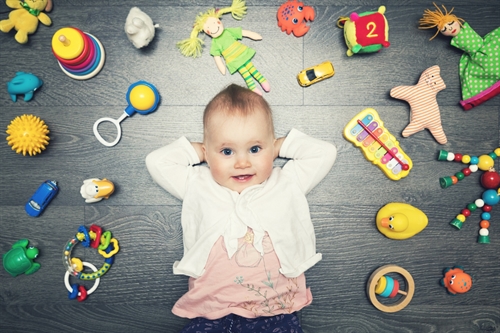So… your baby has started walking. Congratulations, you’ve got a little explorer on your hands! While their boundless curiosity is wonderful, it also means your home now needs a makeover.
Here’s how to create a haven where your little one can explore, and you can breathe a little easier:
1. Get down to their level
The best way to spot hazards is to see your home from a toddler’s perspective. Get on your hands and knees and crawl around each room. What do you see?
- Sharp corners: Table edges, fireplace hearths – these are prime candidates for corner protectors.
- Loose wires and cords: These are a strangulation and tripping hazard. Secure them with blind cord fixing kits or tie them up high.
- Small, swallowable objects: Tiny toys are an obvious choke hazard – but also bear in mind coins, magnets, buttons, batteries, marbles, decorative beads and pet food.
2. Secure and cover everything
Toddlers are surprisingly strong and incredibly resourceful, and they don’t always remember what you’ve told them not to touch. Use locks, catches and covers to keep your small child out of trouble.
- Cabinet and drawer locks: essential for kitchens, bathrooms, and any area with cleaning products, medicines, or sharp objects. Or even just a storage space with items you want to protect.
- Toilet lock: secure the loo to prevent a drowning hazard and keep curious hands out of unsanitary water.
- Door slam stoppers: stop little ones from slamming their fingers in doors.
- Outlet covers: electrical sockets that aren’t in use should be covered if you have a toddler in the house.
3. Anchor furniture and block stairways
Heavy furniture can tip over with a climbing toddler, and stairs are an obvious fall risk.
- Furniture anchors: secure dressers, bookshelves, and TVs to the wall using anti-tip kits. These are available from DIY stores, or they may be included with new furniture.
- Stair gates: install sturdy safety gates at the top and bottom of all staircases to control access.
4. Declutter and utilise self-storage
This is where many parents find both safety and sanity. A cluttered home is harder to toddler-proof and maintain.
- Put away breakables and valuables: Those delicate ornaments, glass vases, or sentimental items you don’t want to get damaged? Store them out of reach, or even better, in a self-storage unit.
- Rotate toys: Overwhelmed by toys? Keep a selection out and rotate the rest into storage. This keeps things fresh for your toddler and reduces clutter.
- Furniture in transition: If you have furniture that’s not currently needed but you plan to use again (for example, a formal dining table that you’ve moved to create a play area), consider storing it. This frees up valuable space and keeps your furniture safe from sticky fingers.
Self-storage is an incredibly useful tool for managing clutter and creating a safer, more spacious home during the toddler years. It allows you to keep items securely without them becoming hazards or taking up precious living space. Your contents insurance policy may not cover your stored domestic goods, but you can get a quote for your self-storage insurance from us.
You can find more tips on decluttering here: Five advantages of decluttering.
5. Create safe play zones
Designate areas within your home where your toddler can play freely without constant supervision. A playpen or a child-gated area can be a lifesaver when you need to step away for a moment.
Pets may also benefit from a safe, toddler-free zone into which they can retreat as necessary.
6. Stay vigilant and adapt
Toddler-proofing isn’t a one-time task; it’s an ongoing process. As your child grows and develops new skills (like climbing or opening doors), you’ll need to re-evaluate and adapt your safety measures.
Making your home toddler-friendly requires a bit of effort, but the peace of mind it brings is priceless. For more comprehensive advice on child safety, especially around the home, you can visit the website of ROSPA (The Royal Society for the Prevention of Accidents).





